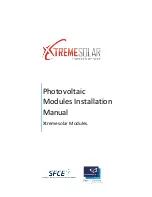
30
11. Additional Features
11.1 Automatic Reset
Once an alarm has been acknowledged and its input has returned to its normal state the alarm can
be set to automatically reset without the operator having to press the reset pushbutton.
11.2 Non-Latch Sequence (No Lock-In)
Alarms can be set to non lock-in, which allows the alarm to automatically return to the non alarm
( off ) state as soon as the signal input returns to normal.
11.3 Reflash Feature
Input reflash is used to inform the operator that an acknowledged alarm has returned to normal and
re-alarmed whilst waiting for reset.
11.4 Ringback Sequence
Ringback sequence is used to inform the operator, both visually and audibly, that an alarm condition
has cleared and the channel can be reset to its normal off state. When a contact returns to normal
the associated window will flash at approx ½ the speed of a normal alarm and the audible alarm will
sound. This identifies the specific alarm and allows the operator to reset as soon as the process is
normal. As an option the MULT relay can be used to drive a 2
nd
audible set to a different tone to the
main audible for use as a ringback audible. Please note ringback cannot function if a channel is set
to auto- reset or non lock- in.
11.5 Two Pushbutton Operation
In certain circumstances using remote pushbuttons, it may be desirable to use only two pushbuttons:
reset and lamp test. The reset pushbutton is used to acknowledge an alarm if the contacts are in the
alarm condition and to reset it if the contacts are clear.
11.6 First-Up Sequences
When monitoring devices with interlinked functions such as a turbine or compressor it is often
important to know the specific alarm that occurred first,
as it will invariably result in cascade of
secondary alarms. This allows the operator to focus on the root cause of failure and therefore limits
the downtime and associated costs. This is achieved by having the first-up alarm flashing in a
different manner compared to the subsequent alarms. Four different first-up sequences are available
F0, F1, F2 and F3 as detailed below and in the following sequence tables.
F0
The standard mode adopted by RTK Instruments, which indicates the first-up alarm by flashing at
twice the rate of subsequent alarms.
F1
In this mode subsequent alarms appear in the acknowledged state, hence they do not flash. The
audible device does not operate when subsequent alarms occur, unless still operating from the
first alarm. The acknowledge pushbutton will reset the first-up indication.
F2
In this mode all subsequent alarms do not flash, they will however operate the audible device.
The acknowledge pushbutton will reset the first-up indication.
F3
In this mode initial alarms appear with an intermittent flash rate and subsequent alarms flash at a
steady rate. On acknowledge subsequent alarms revert to the steady on state and only the first
alarm continues to flash at a slower rate.
Please note auto reset and non lock- in functions are not recommended when using first up
sequences as the true sequence of events cannot be guaranteed.
















































